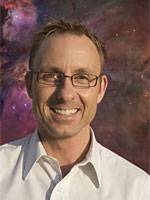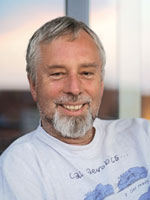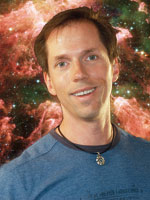Authors |
||
|
Lars Lindberg Christensen Lars is a science communication specialist heading ESO-Hubble outreach group in Munich, Germany, where he is responsible for public outreach and education for VLT, La Silla, ALMA (the largest and most expensive ground-based astronomical project currently under construction), ELT (the largest visible light/near-infrared telescope in planning), and ESA’s part of the Hubble Space Telescope. He obtained his Master’s Degree in physics and astronomy from the University of Copenhagen, Denmark. Before assuming his current position, he spent a decade working as a science communicator and technical specialist for the Tycho Brahe Planetarium in Copenhagen. Lars has more than 100 publications to his credit, most of them in popular science communication and its theory. His other productive interests cover several major areas of communication, including graphical, written, technical and scientific communication. He has written a number of books, notably Eyes on the Skies (Wiley, 2009) The Hands-On Guide for Science Communicators (Springer, 2007) and Hubble — 15 Years of Discovery (Springer, 2006). His books have been translated into Finnish, Portuguese, Danish, German and Chinese. He has produced material for a multitude of different media from star shows, laser shows and slide shows, to web, print, television and radio. His methodology is focussed on devising and implementing innovative strategies for the production of efficient science communication and educational material. This work involves collaborations with highly skilled graphics professionals and technicians. Some of the products of these collaborations are visible at: www.eso.org and www.spacetelescope.org. Lars is Press Officer for the International Astronomical Union (IAU), initiator of the ESA/ESO/NASA
Photoshop FITS Liberator project, executive editor of the peer-reviewed Communicating Astronomy
with the Public journal, director of the Hubblecast video podcast, manager of the IAU International Year
of Astronomy 2009 Secretariat and the Executive producer and director of the science documentary
Hubble — 15 Years of Discovery. In 2005 he received the Tycho Brahe Medal for his achievements in
science communication.
|
|
|
Robert (Bob) Fosbury Bob works for the European Space Agency as part of ESA’s collaboration with NASA on the Hubble project. Carried out in collaboration with the European Southern Observatory (ESO) near Munich in Germany, this work benefits greatly from the unique scientific environment that ESO provides. He started doing this in 1985, five years before launch. During the latter part of this period, Bob served on NASA’s Ad Hoc Science Working Group and ESA’s Study Science Team as they developed the instrument concepts for the James Webb Space Telescope, the next generation of space observatory. Bob has published over two hundred scientific papers on topics ranging from the outer atmospheres of stars, the nature of quasars and active galaxies to the physics of forming galaxies in the most distant reaches of the Universe. He started his career at the Royal Greenwich Observatory (RGO) in Herstmonceux, England in 1969 and was awarded his DPhil by the nearby University of Sussex in 1973. He then became one of the first Research Fellows at the newly constructed Anglo Australian Observatory 4-metre telescope in New South Wales, Australia before going on to ESO, then based at CERN in Geneva, Switzerland. This was followed by a spell of seven years as a staff member at the RGO, working on instruments for the new observatory on La Palma in the Canary Islands and on the pioneering Starlink astronomical computer network. Bob was interim Head of the ESO Public Affairs Department in 2008. He maintains a lifelong interest
in the study of natural phenomena of all kinds and is particularly interested in atmospheric optics and
the origin of natural colour. He is an enthusiastic photographer and likes to develop innovative techniques
for infrared, ultraviolet and stereo imaging.
|
|
|
Robert Hurt Robert Hurt is the visualisation scientist for the Spitzer Space Telescope, the infrared component of NASA’s Great Observatory programme. Receiving his Ph.D. from UCLA for radio studies of starburst galaxies, his research has combined radio and infrared studies of star formation in the Milky Way and beyond. His backgrounds in astronomy, photography and digital art all contribute to his role as visualisation scientist for Spitzer. In addition to rendering astronomical datasets and illustrating science topics, he also produces the popular Hidden Universe video podcast. His other current projects include the ESA/ESO/NASA FITS Liberator (a free tool for importing and processing astronomy data in Adobe© Photoshop©) and metadata standards for the Virtual Astronomy Multimedia Project (www.virtualastronomy.org). Robert lives in Los Angeles, California, USA, near Venice Beach. |



